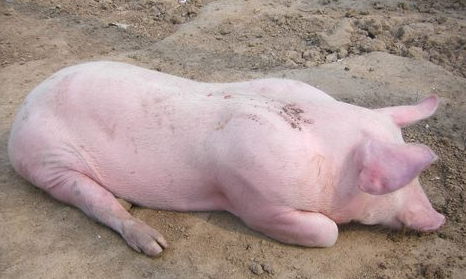Causes and control measures of oil pig disease
The disease is caused by Staphylococcus hyicus. This pathogen is normally present in the skin and does not cause disease. It is still unknown why the disease can cause sudden onset of the disease and cause exudative dermatitis near the wound. Staphylococci produce toxins that cause damage to the liver and kidneys. This disease usually occurs in sporadic piglets and does not affect large groups. But in piglets and weaners that newly produce young sows, the disease can also cause major problems. A few days before the birth, the bacteria in the uterus of the sow will multiply, causing the piglets to become infected during childbirth.
symptom
Sows are not common. However, local skin damage may occur on the back of the ear and on the side of the body.
Piglets with severe piglets will die. A local dark area appears around the infected part of the face and legs. The skin between the two flank, the abdomen and the legs turned brown and eventually developed into the whole body. The skin of the affected part is wrinkled, and the large epidermis is peeled off and has a sense of oil. In severe cases, the skin can be black and piglets can die.
If the piglet receives a certain degree of immunity through the maternal antibody, it will manifest as a localized disease. In this case, the affected part will present a lesion with a diameter of 5 to 10 mm, and there is a clear boundary between the lesion and the healthy skin, and it does not spread.
Weaned pigs and growing pigs usually begin to appear after 3 days of weaning. A localized brown area appears around the infected area of ​​the face and legs. The skin between the two flank, the abdomen and the legs turned brown and eventually developed into the whole body. The skin folds and there is a large piece of epidermis peeling off. As the disease progresses, the skin becomes oily and the color becomes darker. In severe cases, the skin can be black.

This severe case usually results from death from staphylococcal toxins.
The incidence of nursery piglets can be as high as 15%. Often accompanied by symptoms of dehydration.
Causes of the disease : When the nipples compete for the nipple, the sharp teeth of the piglets cause stab wounds on the faces of other piglets, which may cause the disease. When the piglet is sucked on the ground while eating, the wear of the knee skin can also induce the disease. The surface of the floor, the side wall of the box, and the surface of the trough are rough and cause skin damage. The iron preparation injection, tail-breaking and broken teeth process are not properly operated. Bite and skin damage that occurs during weaning. Skin damage caused by sputum. The metal trough scratches the face. Abnormal behavior - bite, bite, suck the navel and other bites. Poor teeth at birth.
diagnosis
Make a diagnosis based on skin symptoms. When the disease breaks out, it is best to do bacterial culture and drug susceptibility testing. Find a wet patient, remove the scars, apply the infected tissue with a cotton aphid, and then send it to the laboratory for bacterial culture and drug susceptibility testing.
treatment
The pigs were injected for 5 consecutive days or treated with long-acting antibiotics based on the results of the susceptibility test.
Optional antibiotics include amoxicillin, oxytetracycline, ceftiofur, cephalexin, spectinomycin, lincomycin and penicillin.
External application of the drug is also effective. The chlorhexidine can be mixed with mineral oil to spray the skin of the piglet, or the diseased piglet can be immersed in the chlorhexidine solution.
Severe dehydration occurs in pigs, and oral electrolytes are needed for rehydration.
Long-acting antibiotics can be injected as a preventive measure 2 to 3 days before the onset of the disease. Long-acting amoxicillin or oxytetracycline can be used.
If the disease is severe in the herd, the sows can be vaccinated with the vaccine prepared by the pig population, and the sows are injected at 4 weeks and 2 weeks before delivery to increase the antibody in the colostrum. content.
If there are serious problems in the piglets of the newly-produced young pigs, cross-feeding measures can be adopted to allow the newborn piglets to feed the colostrum of the old sows, and sufficient maternal antibodies can be obtained in only 4 to 5 hours.
We supply various kinds of peptide including peptide from plants and from animals. Peptide is a kind of Nutritional supplemet for people. Different protein peptides are rich in different nutrients. People can choose suitable protein peptides according to their own body needs. As a kind of nutritionally safe health food, protein peptide plays an important role in improving people's health.
Antioxidation,Regulation of immune function,Contribute to skin care,Delay skin aging and make it whiten,Inhibit the growth of tumor,Hypoglycemic and hypolipidemic,Reduce blood pressure,Inhibit cancer cells,Assisting in decreasing blood glucose,Reduce blood fat, inhibit cholesterol etc.
Quinoa peptide,Ginseng Oligopeptide,Walnut peptide,Wheat protein peptide
Allied Extracts Solutions , https://www.alliedadditives.com